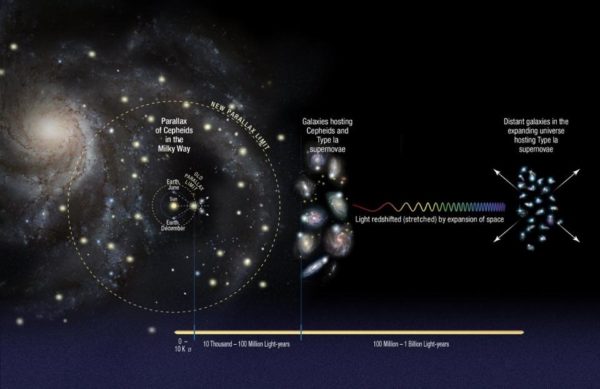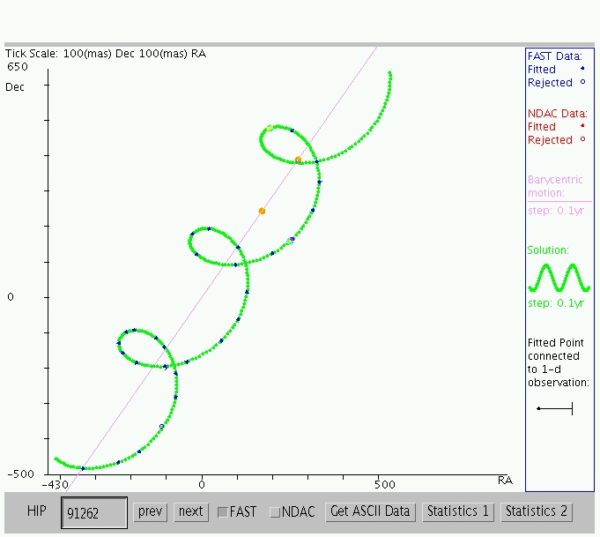“Scratch a cynic and you'll find a disappointed idealist.” -Jon F. Merz
The stars overhead might twinkle and cause us to wonder what they are, exactly, but perhaps a more important question is to wonder where they are. If we can determine the distances to the stars, and then use those known distances to measure the distances to other galaxies, we can not only determine how far away they are, but determine how the Universe has expanded over the course of its cosmic history.
 The construction of the cosmic distance ladder involves going from our Solar System to the stars to nearby galaxies to distant ones. Each “step” carries along its own uncertainties. Image credit: NASA,ESA, A. Feild (STScI), and A. Riess (STScI/JHU).
The construction of the cosmic distance ladder involves going from our Solar System to the stars to nearby galaxies to distant ones. Each “step” carries along its own uncertainties. Image credit: NASA,ESA, A. Feild (STScI), and A. Riess (STScI/JHU).
This concept, of the cosmic distance ladder, was one of the most important astrophysical advances of the 20th century. Yet our attempts to measure distances to all but the very nearest stars have been marred by errors of all sorts, including some that our present technology can’t do anything about. But with the advent of the ESA’s Gaia satellite, we just might be prepared to overcome them all, and figure out, at last, how far away the stars truly are.
 The "real" motion of Vega, just 26 light years away, as made from three years of Hipparcos data. Image credit: Michael Richmond of RIT, under a creative commons license, via http://spiff.rit.edu/classes/phys301/lectures/parallax/parallax.html.
The "real" motion of Vega, just 26 light years away, as made from three years of Hipparcos data. Image credit: Michael Richmond of RIT, under a creative commons license, via http://spiff.rit.edu/classes/phys301/lectures/parallax/parallax.html.

Yay, another page is about to be turned.
My first thought on seeing how messy that parallax data is why you'd only use one satellite.
Wouldn't two on opposite sides of the earth's orbit give you the full possible resolution of the telescope and take the proper motion out of the equation completely? Would that just be too expensive or is there another reason not to do that?